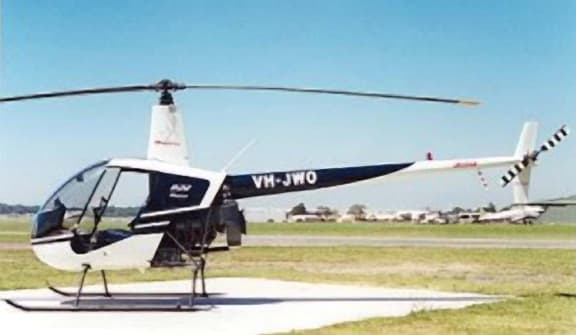The Civil Aviation Authority is to review the safety of the Robinson R22 helicopter after warnings the aircraft could break apart in mid-air unless pilots are alerted to the risk of flying into turbulence.

A Robinson R22 helicopter. Photo: AAP
Marcus Hoogvliet, 21, and his instructor Graham Stott, 32, died when a Robinson R22 crashed in April 2011 near Mt Aspiring during a training flight. The aircraft is New Zealand's most common light helicopter.
A report by the Transport Accident Investigation Commission into the accident said the helicopter broke up mid-flight. It said the crash may have been caused by severe or extreme turbulence, the main rotor speed being allowed to drop too much, or the pilots making abrupt movements.
The commission's chief investigator, Tim Burfoot, said the danger of flying R22s at high altitudes and in turbulent conditions needs to be explained more clearly to pilots.
He said extra safety measures were scrapped by the Civil Aviation Authority in 1998. Mr Burfoot said a helicopter break-up accident has occurred every 18 months since 2002.
"We've done several enquiries before that have involved Robinson helicopters in flight break ups," he said.
"It was when we noticed this trend and then this one happened we said we better take a deeper look and see what sort of pattern is happening here."
In a written statement, the Civil Aviation Authority said it will see whether stricter American safety regulations for R22s could be adopted here.
"While the Federal Aviation Administration is a recognised world leader in aviation regulation, this doesn't mean that all of its regulations are appropriate for New Zealand. We may be able to adapt some of these to New Zealand's conditions, which is why we are looking closely at how the FAA has been regulating the safety of R22 helicopters," it said.
Experienced Robinson R22 pilot Toby Reid said current training is comprehensive enough.
"We have quite regimented safety awareness on the R22 and even the most experienced of R22 pilots has to recount the training every two years. Which goes over flying in the wind and all of the hazardous flying conditions."
Mr Reid said he still had confidence in the R22's safety despite knowing three experienced pilots who had been killed in the aircraft.
Aviation New Zealand chief executive Samantha Sherif said the aviation industry takes any recommendations made with a view to improving safety very seriously.
"We will work with TAIC (Transport Accident Investigation Commission) and other organisations to assess the recommendations to see where we can improve," she said.

